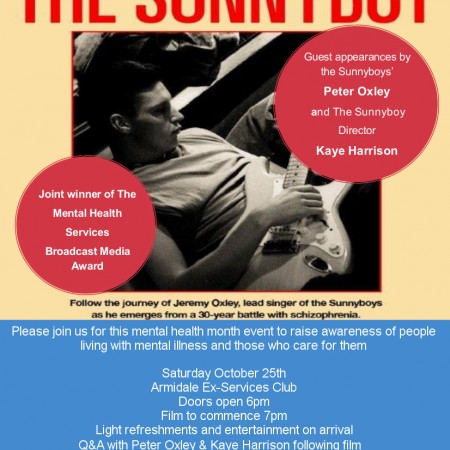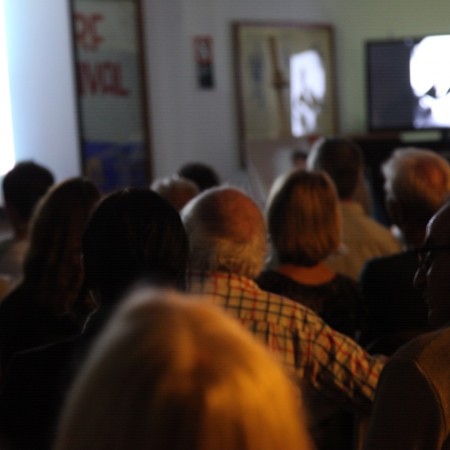
OUTREACH SCREENING + Q&A EVENTS
Over 1000 people attended The Sunnyboy Film + Q&A Events throughout 2013 & 2014. Organisations who advocate for people living with mental illness hosted the events, bringing together a broad range of community members to be entertained and inspired by Jeremy’s story of hope and recovery.
The response at the events was consistently positive and strong. The film seems to really resonate for those living with mental illness as well as family members and carers. Others who work in the sector told me time and time again the doco had put “fuel in their tank” to keep on doing the challenging work they were doing. I am quietly confidant The Sunnyboy Outreach has given hope to many and has helped chip away a little at some of the stigma that surrounds mental illness and most particularly schizophrenia. A very successful and therefore gratifying endeavour!
Thanks to Janssen Pharmaceuticals for providing the funding support for The Sunnyboy outreach initiative. Thanks to Peter Oxley who supported the screenings with a great deal of enthusiasm and goodwill. Thanks also to the organisations that supported the outreach in both rural and urban communities (please see full list below). It was a real joy to meet the lovely people who work for these organisations, whose contributions make a difference to the communities they serve!
Community and Educational Screening “Events” throughout 2013 & 2014:
The Western Australian Association for Mental Health (WAAMH) WAAMH – screening + Q&A with director Kaye Harrison for launch of 2013 Mental Health Week WA for MIFWA, at Palace Luna Leederville, 06 October 2013. (90 people)
Carers NSW - screening plus Q&A in Newcastle with director Kaye Harrison. Sunnyboys photo exhibition by Catherine Croll. 28 November 2013. (80 people)
The Australasian Society for Psychiatric Research Conference - screening plus Q&A in Melbourne with Professor Patrick McGorry (2010 Australian of the Year), Mary Oxley Griffiths (Jeremy’s wife) and director Kaye Harrison. Supported by Mind, PAT and the Mental health Council of Australia. 04 December 2013. (50 people).
Janssen Pharmaceuticals - National Conference, workshop and presentation in Melbourne featuring Mary Oxley Griffiths (Jeremy’s wife). February 2014.
The University of Melbourne Interdisciplinary Symposium: “Try Walking in My Shoes: Empathy and Portrayals of Mental Illness on Screen”, screening plus Q&A with Professor Patrick McGorry (2010 Australian of the Year), Jack Heath (CEO SANE) and director Kaye Harrison, 14 February 2014 (80 people).
Eastern Sydney Medicare Local/Partners in Recovery Launch - film plus Q&A with Peter Oxley and director Kaye Harrison at the Randwick Ritz Cinema (Sydney) Wednesday April 09, 2014. Supported by The Sunnyboy Outreach Fund (main sponsor:Janssen Pharmaceuticals) (110 people).
Wagga Wagga - Schizophrenia Fellowship of NSW (Sunflower House), Murrumbidgee Medicare Local, Wagga Wagga City Library - film + Q&A event with director Kaye Harrison at the Forum 6 Cinema for Schizophrenia Awareness Week, sponsored by The Sunnyboy Outreach Fund (main sponsor:Janssen Pharmaceuticals). May 19, 2014 (120 people).
Mental Illness Fellowship Queensland/Nth Brisbane Partners in Recovery, Sth Brisbane Medicare Local - film + Q&A with Mary Oxley Griffiths, Peter Oxley (Sunnyboys) and director Kaye Harrison at the University of Queensland Schonell Theatre (St Lucia Campus) for Schizophrenia Awareness Week. Supported by The Sunnyboy Outreach Fund (main sponsor:Janssen Pharmaceuticals), May 20, 2014 (60 people).
Sunshine Coast Medicare Local/Partners In Recovery - film + Q&A with Peter Oxley (Sunnyboys) and director Kaye Harrison at the Nambour Civic Centre for Schizophrenia Awareness Week. Supported by The Sunnyboy Outreach Fund (main sponsor:Janssen Pharmaceuticals), May 21, 2014 (50 people).
Schizophrenia Fellowship of NSW, Northern Beaches (Sydney)- film + Q&A with Peter Oxley (Sunnyboys) and director Kaye Harrison at the Manly Surf Life Saving Club for Schizophrenia Awareness Week and fundraiser for the East Wing Mental Health Unit, Manly Hospital. Supported by Family & Carer, Pioneer Clubhouse, Northside Community Forums, Uniting Care Mental Health, Community Connect, Respite Services, Carers Program, Consumer Participation Network and The Sunnyboy Outreach Fund (main sponsor:Janssen Pharmaceuticals), May 23, 2014 (120 people).
THeMHS Conference/Co Sponsorship with Perth Metro Partners In Recovery - film + Q&A with Peter Oxley (Sunnyboys) and director Kaye Harrison at the Perth Convention Centre. Supported by TheMHS, Richmond Fellowship WA, Perth North Medicare Local PIR, Perth Central & East Metro Medicare Local PIR and The Sunnyboy Outreach Fund (main sponsor:Janssen Pharmaceuticals) August 27, 2014 (65 people)
Sunshine Coast Medicare Local, Partners in Recovery - film + Q&A event with director Kaye Harrison at the Nambour Civic Centre as a Fundraiser for Mental Health day. Supported by The Sunnyboy Outreach Fund (main sponsor:Janssen Pharmaceuticals), October 10, 2014 (50 people).
Schizophrenia Fellowship of NSW (Goulburn) and Richmond Fellowship (Goulburn) - film + Q&A, two screenings with Peter Oxley (Sunnyboys) and director Kaye Harrison at the Lilac City Cinema for Mental Health Month. Supported by Carer Support, Salvation Army and The Sunnyboy Outreach Fund (main sponsor:Janssen Pharmaceuticals), October 15, 2014 (70 people in total).
Hunter New England Local Health District - film + Q&A with Peter Oxley (Sunnyboys) and director Kaye Harrison at the Armidale Ex-Services Club for Mental Health Month 2014. Supported by OCTECI Employment Service, Richmond Fellowship, Carer Assist and The Sunnyboy Outreach Fund (main sponsor:Janssen Pharmaceuticals), October 25, 2014 (70 people).
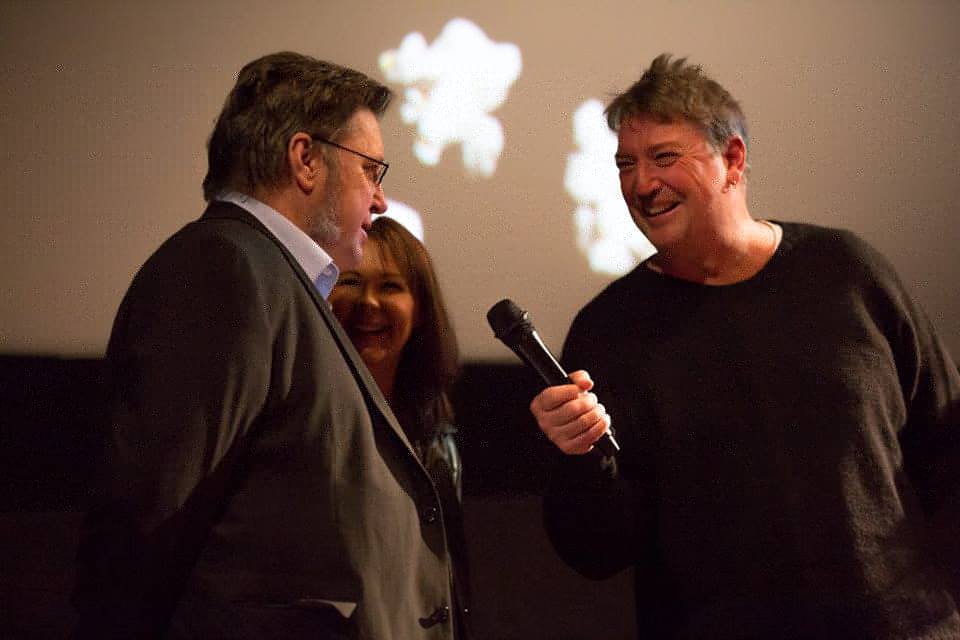
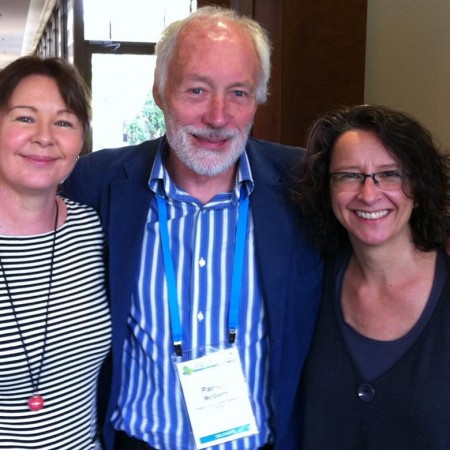
What people are saying about The Sunnyboy
The feature documentary The Sunnyboy impacts significantly on a very broad audience including;
- advocates for mental health reform;
“The Sunnyboy is quite simply the best, most sensitive and compelling communication I have ever seen of schizophrenia and psychosis and beautifully illustrates everything that the public and indeed the health system and mental health professionals need to understand. From the need for early diagnosis and recognition, to the need for a stigma-free and sophisticated way to engage people from the onset of distress and alienation, through the need for extremely careful use of medication balanced with expert psychosocial care, and the essential need for all relatives (especially parents and siblings) to be empowered and consistently supported “
(Professor Patrick McGorry – Executive Director of Orygen Youth Health, Australian of the Year 2010)
- organizations who advocate for people with a mental illness;
“The Sunnyboy is honest and powerful in its depiction of one man’s battle with schizophrenia. It has enormous educational potential to combat stigma and increase understanding of severe mental illness.”
(Jack Heath – CEO of SANE)
“Over the years I have been involved in the production of many documentaries….there have been none that have had the intimacy, accessibility and power of The Sunnyboy.”
(Rob Ramjan – CEO of the Schizophrenia Fellowship of NSW)
- professionals working in the mental health sector;
“Without doubt one of the best documentary films I’ve seen. Honest, respectful and a privilege to watch. From a mental health clinician point of view it was incredibly interesting to hear J speak about his own experience of what we call schizophrenia.” (Director of Operations in a Mental Health Facility)
“I have worked in public mental health services for over 30 years …and can honestly say that I have never seen such an honest depiction of schizophrenia and the ripple effect on the individual, family and loved ones. I feel that everyone I work with should see this documentary and would relate to it positively.”
- music journalists;
“It’s a story that doesn’t flinch from the difficult bits— the film embraces them and that’s what makes it rock & roll. Inner turmoil and art are often bedfellows. The Sunnyboy explores that relationship as few films ever have.” (Toby Creswell, Music journalist)
- Sunnyboys fans;
“It was such a fine ensemble of humour, sadness, inspiration, whilst invoking so many fond memories of gigs gone by. Such an honest journey from some interesting angles, which provoked so many thoughts…. thanks for a great film and filling in a void in what actually happened to a voice which has provided years of soundtrack to many lives”
- families caring for a loved one with a mental illness;
“My family has a long history of mental illness, mainly Bipolar & schizophrenia. …. Many many thanks for putting your story out there. It gives people suffering from mental illness a sense of hope & determination to overcome their illness & the understanding that they are not alone in the day-to-day struggle to do so.”
“…tears fell as I saw the story unfold and it mirrored my brothers illness. He has schizophrenia also however is not on any medication, he plain refuses…. I hope one day my brother will come round to the fact that he needs medication, this gives me hope thank you, thank you, thank you”.
- people living with mental illness;
“I definitely had a good cry too, but more than that it gave me this incredible feeling of hope. As a schizophrenic I found Jeremy’s story overwhelmingly relatable.
”I saw The Sunnyboy in Lismore last month ….I wanted to say in the q&a section how the movie had helped me personally. I have not had a drink or smoked pot since…My psychologist is helping me lots and I have a future now that continues to give me strength. It was a lucky chance that I….stumbled on the movie. I was in a life change and it was the ash that made the cement become concrete.”
- and even from people who had had little personal experience with schizophrenia but still felt compelled to respond:
“I don’t understand it, but now I’m open to try. Best wishes to you and your family.”
By sharing Jeremy Oxley’s lived experience in a very personal and engaging way The Sunnyboy emotionally connects with a broad audience and creates understanding and empathy about a complex mental illness.
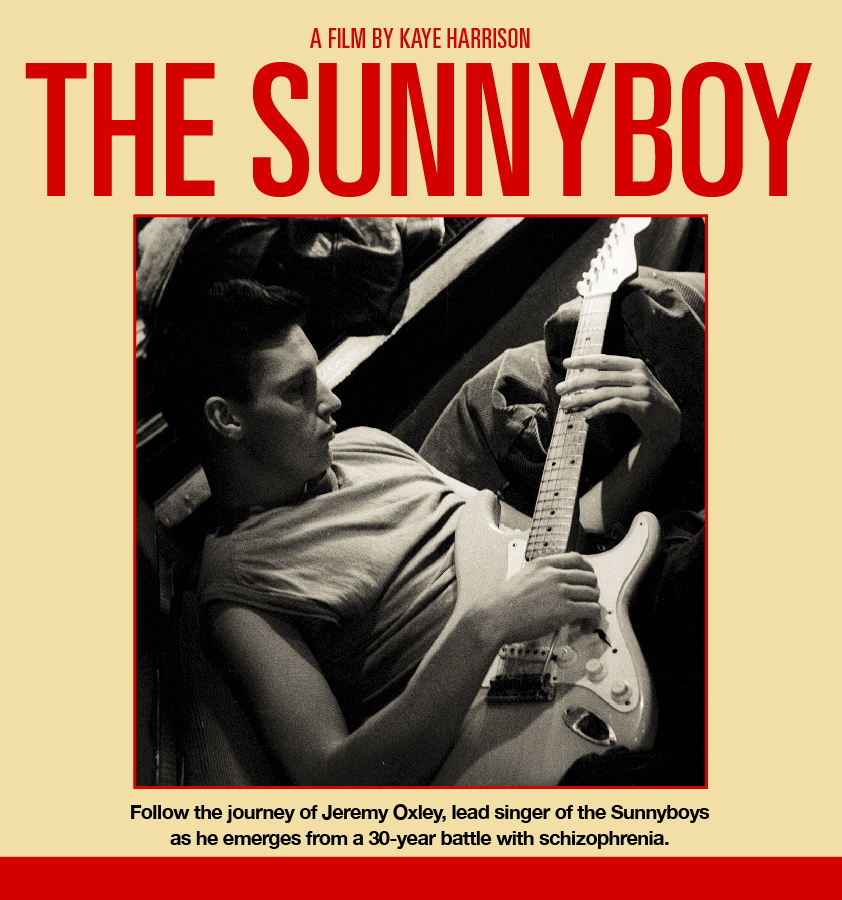
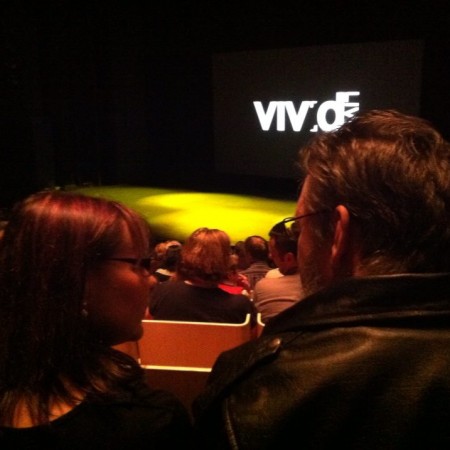
PUBLIC SCREENINGS OF THE SUNNYBOY
Sydney Film Festival/Vivid – World Premiere at the Sydney Opera House, 1300 sell out audience (received standing ovation). June 02 2013
Sydney Film Festival second screening - film plus Q&A with Jeremy Oxley, Peter Oxley (Jeremy’s brother), Mary Oxley Griffiths (Jeremy’s wife) and director Kaye Harrison. Introduced and hosted by Jenny Neighbour (SFF doco programmer). July 2013
Splendour in the Grass Music Festival, Splendour Forum – film plus Q&A with Peter Oxley (Sunnyboys), Mary Oxley Griffiths (Jeremy’s wife) and director Kaye Harrison. 27 July 2013
Melbourne International Film Festival - film plus Q&A at The Forum with Peter Oxley (Jeremy’s brother) and director Kaye Harrison. 09 August 2013
Melbourne International Film Festival - film plus Q&A at ACMI with director Kaye Harrison. 11 August 2013
Coolangatta Birch Carroll & Coyle Cinema (3 screenings) including Q&A’s with director Kaye Harrison and one with Mary Oxley Griffiths (Jeremy’s wife) and one with Eric Oxley (Jeremy’s father). 16, 17 & 24 August 2013.
Lismore Star Court Theatre (2 screenings) Q&A’s with director Kaye Harrison and one with Mary Oxley Griffiths (Jeremy’s wife). 18 & 23 August 2013.
Palace Cinemas National Cinema Release – special event screenings:
Brisbane, Palace Centro – film plus Q&A with director Kaye Harrison and Mary Oxley Griffiths (Jeremy’s wife). Introduced by Tim Cox (ABC Brisbane local radio), Jeremy attended and signed autographs afterwards. 14 September 2013.
Byron Bay - film plus Q&A with director Kaye Harrison and Mary Oxley Griffiths (Jeremy’s wife). Introduced and hosted by Terry Tappa Teece. 15 September 2013.
Adelaide, Palace Nova - film plus Q&A with director Kaye Harrison and Peter Oxley (Jeremy’s brother). Introduced and hosted by Richard Kuipers (film critic). 21 September 2013.
Sydney Chauvel Cinema - film plus Q&A with director Kaye Harrison and Peter Oxley (Jeremy’s brother). 22 September 2013.
Perth Luna Palace - film plus Q&A with director Kaye Harrison. Introduced and hosted by Bob Gordon (Editor XPress Magazine). 06 October 2013.
Melbourne Palace Kino - film plus Q&A with director Kaye Harrison and Mary Oxley Griffiths (Jeremy’s wife). Introduced and hosted by Jack Heath (CEO SANE). 11 October 2013.
Canberra, Palace Electric - film plus Q&A with director Kaye Harrison and Peter Oxley (Jeremy’s brother). One screening introduced and hosted by Andrew Pike (Ronin Films). 12 & 13 October 2013.
Murwillumbah, The Regent Cinema. Screening only. 05 October 2013.
Perth Luna Palace – The Western Australian Association for Mental Health (WAAMH) WAAMH launch of Mental Illness Week for MIFWA, film plus Q&A with director Kaye Harrison. Hosted by Glenn Mitchell (ex ABC sports commentator) at Perth Luna Palace 06 October 2013.
Walkley Award for Documentary finalist (longlist) screening at the State Library of NSW – film + Q&A with director Kaye Harrison. 19 October 2013.
ABC 1 Broadcast. November 03, 9.30pm.
Carers NSW - screening plus Q&A in Newcastle with director Kaye Harrison. Sunnyboys photo exhibition by Catherine Croll. 28 November 2013. (80 people)
The Australasian Society for Psychiatric Research Conference - screening plus Q&A in Melbourne with Professor Patrick McGorry (2010 Australian of the Year), Mary Oxley Griffiths (Jeremy’s wife) and director Kaye Harrison. Supported by Mind, PAT and the Mental health Council of Australia. 04 December 2013. (50 people).
Janssen Pharmaceuticals - National Conference, workshop and presentation in Melbourne featuring Mary Oxley Griffiths (Jeremy’s wife). February 2014.
The University of Melbourne Interdisciplinary Symposium: “Try Walking in My Shoes: Empathy and Portrayals of Mental Illness on Screen”, screening plus Q&A with Professor Patrick McGorry (2010 Australian of the Year), Jack Heath (CEO SANE) and director Kaye Harrison, 14 February 2014 (80 people).
Eastern Sydney Medicare Local/Partners in Recovery Launch - film plus Q&A with Peter Oxley and director Kaye Harrison at the Randwick Ritz Cinema (Sydney) Wednesday April 09, 2014. Supported by The Sunnyboy Outreach Fund (main sponsor:Janssen Pharmaceuticals) (110 people).
Wagga Wagga - Schizophrenia Fellowship of NSW (Sunflower House), Murrumbidgee Medicare Local, Wagga Wagga City Library - film + Q&A event with director Kaye Harrison at the Forum 6 Cinema for Schizophrenia Awareness Week, sponsored by The Sunnyboy Outreach Fund (main sponsor:Janssen Pharmaceuticals). May 19, 2014 (120 people).
Mental Illness Fellowship Queensland/Nth Brisbane Partners in Recovery, Sth Brisbane Medicare Local - film + Q&A with Mary Oxley Griffiths, Peter Oxley (Sunnyboys) and director Kaye Harrison at the University of Queensland Schonell Theatre (St Lucia Campus) for Schizophrenia Awareness Week. Supported by The Sunnyboy Outreach Fund (main sponsor:Janssen Pharmaceuticals), May 20, 2014 (60 people).
Sunshine Coast Medicare Local/Partners In Recovery - film + Q&A with Peter Oxley (Sunnyboys) and director Kaye Harrison at the Nambour Civic Centre for Schizophrenia Awareness Week. Supported by The Sunnyboy Outreach Fund (main sponsor:Janssen Pharmaceuticals), May 21, 2014 (50 people).
Schizophrenia Fellowship of NSW, Northern Beaches (Sydney)- film + Q&A with Peter Oxley (Sunnyboys) and director Kaye Harrison at the Manly Surf Life Saving Club for Schizophrenia Awareness Week and fundraiser for the East Wing Mental Health Unit, Manly Hospital. Supported by Family & Carer, Pioneer Clubhouse, Northside Community Forums, Uniting Care Mental Health, Community Connect, Respite Services, Carers Program, Consumer Participation Network and The Sunnyboy Outreach Fund (main sponsor:Janssen Pharmaceuticals), May 23, 2014 (120 people).
THeMHS Conference/Co Sponsorship with Perth Metro Partners In Recovery - film + Q&A with Peter Oxley (Sunnyboys) and director Kaye Harrison at the Perth Convention Centre. Supported by TheMHS, Richmond Fellowship WA, Perth North Medicare Local PIR, Perth Central & East Metro Medicare Local PIR and The Sunnyboy Outreach Fund (main sponsor:Janssen Pharmaceuticals) August 27, 2014 (65 people)
Sunshine Coast Medicare Local, Partners in Recovery - film + Q&A event with director Kaye Harrison at the Nambour Civic Centre as a Fundraiser for Mental Health day. Supported by The Sunnyboy Outreach Fund (main sponsor:Janssen Pharmaceuticals), October 10, 2014 (50 people).
Schizophrenia Fellowship of NSW (Goulburn) and Richmond Fellowship (Goulburn) - film + Q&A, two screenings with Peter Oxley (Sunnyboys) and director Kaye Harrison at the Lilac City Cinema for Mental Health Month. Supported by Carer Support, Salvation Army and The Sunnyboy Outreach Fund (main sponsor:Janssen Pharmaceuticals), October 15, 2014 (70 people in total).
Hunter New England Local Health District - film + Q&A with Peter Oxley (Sunnyboys) and director Kaye Harrison at the Armidale Ex-Services Club for Mental Health Month 2014. Supported by OCTECI Employment Service, Richmond Fellowship, Carer Assist and The Sunnyboy Outreach Fund (main sponsor:Janssen Pharmaceuticals), October 25, 2014 (70 people).
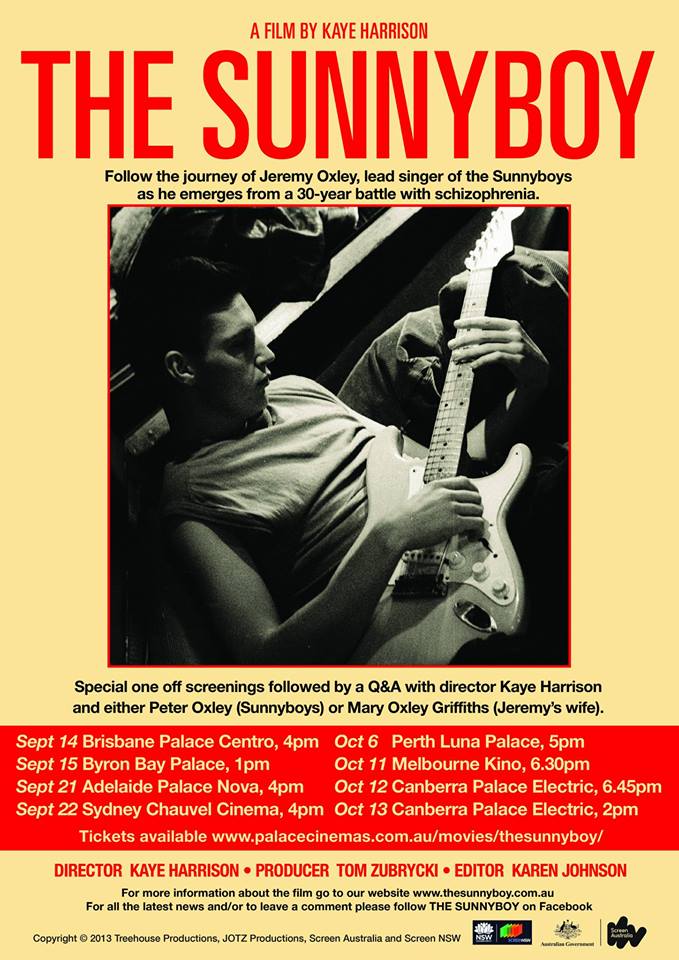
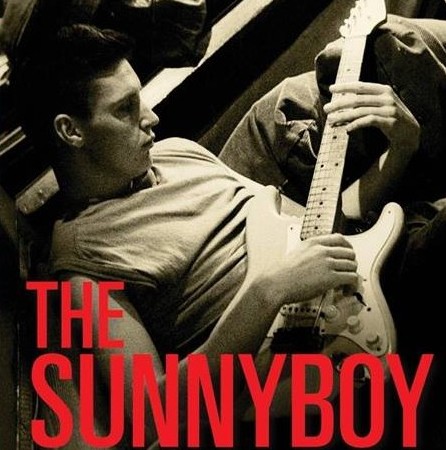
The Sunnyboy DVD Extras trailer
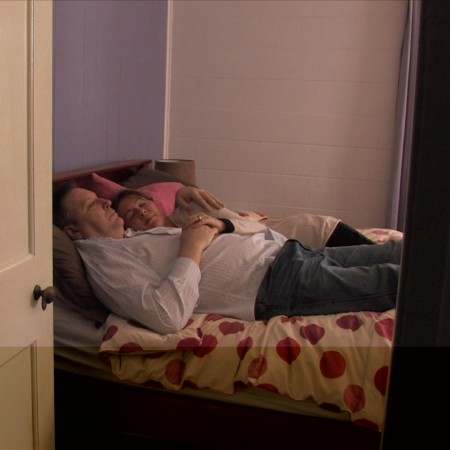
OUTLINE OF ...
THE SUNNYBOY explores Jeremy Oxley’s incredible life past and present via the relationship with his brother and fellow band member Peter, and also via his relationship with his partner Mary. The two narratives are interwoven to reveal Jeremy’s back-story and to also propel the present day story that unfolds over an 18-month period.
THE SUNNYBOY establishes Jeremy as a young, much revered singer, song-writer/guitarist, the creative force behind the highly successful 80’s band the Sunnyboys. Peter admired Jeremy for his natural genius as a musician whilst Jeremy looked up to Peter as the “big brother” and main decision maker in the band. The unrelenting pressures to record, tour and come up with the next big “hit” took their toll on Jeremy and coincided with the onset of his mental illness.
Jeremy was diagnosed with schizophrenia when he was 22, during the final period with the band. Due to his lack of insight into his illness (which is part of his illness), he rejected the diagnosis and refused to have treatment.
Jeremy gradually withdrew from the “real” world as he tried to cope with his own reality, to decipher the confusing thoughts and auditory hallucinations that bombarded him day and night. For the next 25 years Peter and his parents lived with the unrelenting sadness of “losing” Jeremy and the frustration of not being able to help. Through his music and his painting, Jeremy strived to make sense of his pain and the suffering he saw in the world.
In 2008 Mary had been widowed for 5 years and her 10-year-old twin sons suggested she find a nice boy friend. After watching old Countdown clips they decided that Jeremy would be a good choice so for fun they did a bit of research and tracked him down. When Mary went to help Jeremy as part of a support group, he wasn’t at all well. She wasn’t deterred by his behaviour as she could see beneath the layers of illness to the gentle man locked inside. Their relationship slowly blossomed and gradually Jeremy made the choice to try medication so he could stay with Mary and become part of her family. After about 8 months of trial and error his condition began to stabilize.
Safe and secure in a loving environment, with all his physical and mental health needs being met, Jeremy’s well-being slowly improved. He tentatively revisited parts of his life that had caused him pain, particularly his brother Peter and any association with the music industry. It was like a big ball of confusion was slowly untangling and Jeremy was gradually working out what was real and what had been misconstrued.
As Jeremy and Peter sat on Jeremy’s veranda and played a song they co-wrote 30 years earlier, it was like they had never been forced apart. Re connected with his brother and growing in confidence, Jeremy makes the decision to reclaim his professional career and return to the stage.


PERSONAL STATEMENT FROM DIRECTOR KAYE HARRISON
As a filmmaker, I’m drawn to complex topics that tend to be poorly understood in the community. I find “a way in” so the audience can engage with the issue. I do this by telling the personal stories of likeable characters. I was interested in making a film about mental illness and specifically schizophrenia given it is probably the most stigmatized of all mental health conditions. Often associated with fear and violence, I wanted to give voice to someone who was experiencing the condition, to connect them with the broader community so their story might create awareness and empathy.
Jeremy Oxley is obviously a fabulous character as he is so charismatic, funny and engaging. Of course he doesn’t represent all people living with schizophrenia, as everyone’s experience of the condition is different. However elements of his story resonate with people living with mental illness and those who care for them.
In many ways I feel like I have just scratched the surface of Jeremy’s amazing story, particularly the level of pain he experienced throughout his life. Jeremy never felt particularly comfortable talking about those times and I completely understand and respect that. Maintaining his well-being throughout the filming process was my top priority so whatever he was able to share I was grateful for. I did think it was important to go to those dark days in order to honour his story and for people to understand how far he had come. I also hope it helps create empathy for other people who are suffering a psychotic illness.
The fact that Jeremy often doesn’t believe he has schizophrenia weighed heavily on me. I wanted Jeremy to be empowered by the process of making the film and to feel fairly represented in the final product otherwise I would have failed. I worked very hard to understand and then convey his perspective of his story in a way that would be true to him and also accessible to the audience. The most gratifying moment for me in the entire process of making this film is when Jeremy watched the cut and said it he thought it was true and that I’d done a good job.
Although it was Jeremy’s mental illness that brought me to his story, I do not see him as a man reduced to this condition. I admire his incredible strength of character to have survived decades of pain. I feel very honored to have got to know Jeremy, Mary and Peter and I am very grateful for all that they have shared. The trust that they showed me was incredible and the main reason this film is as powerful as it is.
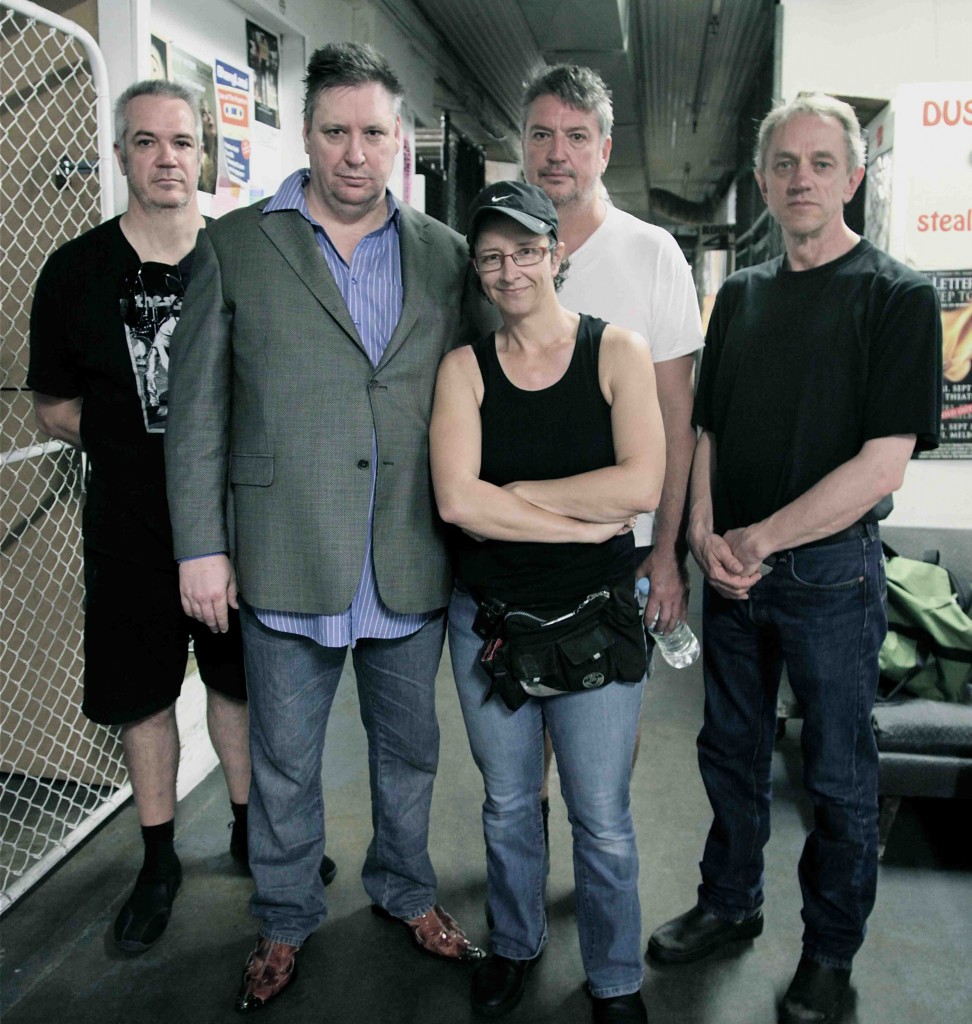
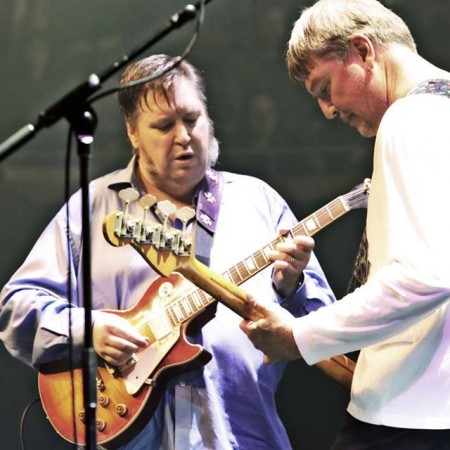
TOBY CRESWELL ON THE SUNNYBOYS AND THE SUNNYBOY (NOV 2013)
Somewhere in the Autumn of 1980 I met Jeremy Oxley, it must have been at the Civic or somewhere similar. I already knew Peter Oxley and Richard Burgman from their band the Shy Imposters. My own band did our first gig supporting the Shy Imposters at the Metropole Tavern in December 1979.
Anyway, in those days there was small scene of what would now be called hipsters, hanging around Darlinghurst. Most of the music scene in Sydney came from dreadful boogie bands dreaming of Deep Purple or boring West Coast music type. In fact there was a revolution in music that was happening around the world called punk rock or new wave and it was happening in Sydney but only a few hundred kids had caught on. Those that were in the center of it seemed pretty special and Jeremy, because of Peter, was plummeted right into the middle.
The Sunnyboys then were picking up on the garage sounds of the day plus there was a big dose of Beatles and a bunch of other stuff. Two things set them apart from the scene. The first was Jeremy’s kind of odd charisma and the strength of the songs. The second thing was that the Sunnyboys were tight as hell and they weren’t concerned about being cool – they wanted to communicate, they wanted to get out of the inner city.
And so it came to pass. The Sunnyboys were clearly the group of the year – the first yellow ep on Phantom was a smash and the yellow self-titled album totally delivered on the original promise. This was rock 7 roll completely unadorned and incredibly passionate. It was as though Jeremy had no filters really – these songs of angst like “Alone With You”, “Happy Man”, “Trouble In My Brain” were coming straight from the heart. While Jeremy may say that they are about this or about that the fact is that the songs reflected the confusion that he felt.
There was always something a little bit skew whiff about the Sunnyboys. The name and the iconography came from Peter and his girlfriend Liz Croll. They were picking up on the idea of pop music being positive and happy and honest but somehow it also acknowledged that pop has its dark side. The smiles that stretched across those guys’ faces were often just pure joy but sometimes it looked like a grimace. “I’m swimming in a sea of doubt,” he sings on “Happy Man” where the depictions of unease and paranoia ring true than the chorus “I’m a happy man.” But that tension is what makes for great rock & roll music.
The quality of the songwriting notwithstanding, it was the chemistry within the group that made the whole thing work. Bil Bilson is a powerful drummer who can really make a song swing. In combination with Peter Oxley the Sunnyboys had a very powerful bottom end that was never heavy, that always had bounce and a sense of pleasure. Richard and Jeremy’s guitars just seemed to work in lock step. When you listen to them its almost impossible to tell one part from the other.
Live the Sunnyboys killed every time. A set of powerful original songs with a Beatles tune (“Birthday”) or a garage rock anthem thrown in for good measure and the joint jumped.
Although the influences were quite obvious, the band itself created a sound that was completely unique. There’s never been another group even remotely like them.
In the early 1980s going to see bands in pubs was the thing to do. Venues operated seven nights a week and literally thousands of kids saw live music every week. The standard was really high – all the legends of Australian music were just coming through. The Sunnyboys quickly rose through the ranks. They were headlining within a year. The album was a big success.
Probably the Sunnyboys experienced too much too soon. For Jeremy he was a star before he was 21. People he didn’t know wanted his soul and the booking agency wanted the band playing 200 nights a year. There was no time for reflection it was off to do and hour and half at Maroubra Seals.
The band was barely off the road long enough to make a second album Individuals. It has had some bad press but I like the album. Not a great departure from the first album but a good progression. Then it was back on the road. Bad food in greasy spoons, lashings of alcohol and as much speed as you cared for.
The lifestyle and the pressure began to take its toll. Probably it would have been good to regroup, take some time to reflect but the band was no longer masters of their own destiny.
Then there was a third album recorded in England with a whole bunch of different textures and styles of songwriting. Clearly Jeremy was trying to break out of his box but he needed more time than was allocated to reinvent. There’s interesting material on the third album and it could have been a classic.
It’s now clear that Jeremy had problems and the pressure of the band probably exacerbated an illness that was coming anyway. But also these guys were in their early 20s playing loud rock and roll for people who loved them. They were in their ways kings. That’s always gonna be difficult. Learning about life and love and playing rock & roll is a volatile place to hang out.
I didn’t see any dates on the last tour. Maybe I was burned on the band’s sound after the intense few years. Also I’d been hearing stories about Jeremy being off the rails and stuff. I didn’t want to see a band on its last legs, I wanted to remember them as they had been at the Chatswood Charles or the Rock garden or the Civic – young wild and free and hanging on for dear life as the sound exploded.
Then I got that last live album to review and I regretted not catching a show they were still tight as ever and the songs still swung. My favourite Sunnyboys moment – the thing I always wait for is “I’m Shakin’”. Those duel guitar arpeggios zooming away and then the way that Bil pounds out the toms, building up these waves and waves of jungle drums sneaking up behind the rest of the song and suddenly propelling it forward. He’s like a surfer catching a wave and then when the melody and the beat get into synch it goes to the next level. Once off the dynamics of the song twist and flow and ebb into an all-consuming sea of possibility. Swept away. We were all swept away by the Sunnyboys, touched by the struggles in the songs that reflected our own confusion and ultimately washed to safety on the shore but this understanding in the music that things would ultimately be all right.
One of Jeremy Oxley’s big hits with the Sunnyboys was “The Seeker” and that’s how Jeremy describes himself in the film The Sunnyboy. I think it’s the key. The source of some of the most powerful of Sunnyboys’ songs was Jeremy’s desperate search for his identity. When I first met him in 1980 he seemed uncomfortable in his skin and he was searching, in the glare of fame for who he was. After seeing The Sunnyboy I understand better the stakes in Jeremy’s search. He’s still seeking. The great value in this film is that it is still seeking too. The film doesn’t wrap everything up in a neat ball, it doesn’t run from the difficult moments but you understand the way that music and art can come from really deep parts of an artist.
This is not the usual rock & roll portrait of an artist. It’s a story that doesn’t flinch from the difficult bits— the film embraces them and that’s what makes it rock & roll.
Inner turmoil and art are often bedfellows. The Sunnyboy explores that relationship as few films ever have.
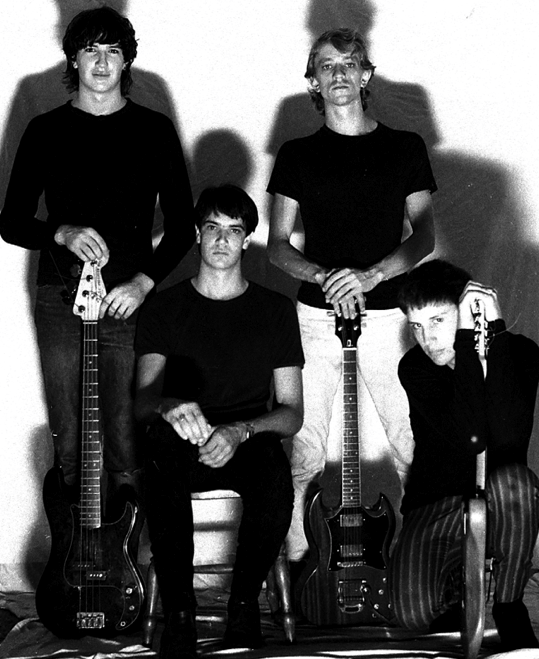
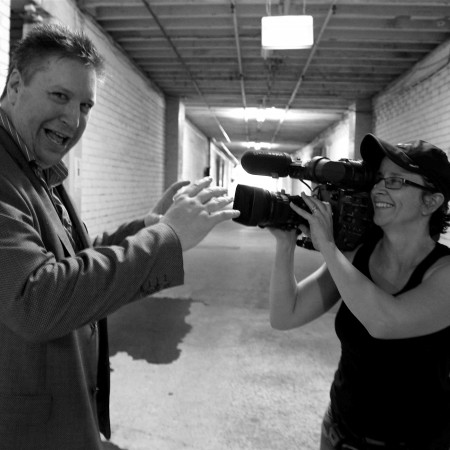
INSIGHTS INTO THE MAKING OF...
In the very early days of making the film I had a number of concerns about how I was going to be able to work with Jeremy and how possible it would be for me to access his story. I wasn’t sure if he would be well enough to participate over a long period of time and how much I could depend upon him to maintain a commitment to the film. Thinking ahead to when the film would be completed (if I could actually make it), I had concerns about whether he would feel the film fairly represented him given his reality can be quite different to others.
I had to put Jeremy’s well being as my top priority because I did not want the process of making the film to harm him in anyway. I couldn’t rush the process or push him. I took him to places in his past (in interview) but I had to let Jeremy dictate how much would be discussed and when that could happen. It was a process I could guide but couldn’t control. I had to put a lot of faith in Jeremy and hope he would put his faith in me.
As a filmmaker there’s a lot of pressure to come up with the goods and show proof of access to a strong character and a strong story otherwise you don’t get support and funding. Although I always believed in Jeremy and what he would bring to this film, it was hard to show that for many many months. The access came with the development of our relationship and the building of trust. So I had to self fund much of the production and that caused considerable stress for me, stress I had to absorb and not pass onto Jeremy.
As the process continued and as I got to understand Jeremy I realized he respected me as a fellow “artist”. He was aware of how much effort I was putting into his story, how committed I was to getting it right and doing it with integrity. I think my work ethic resonated with him because that’s how he approached his work as a musician when he was young, passionate and optimistic, before he had been chewed up and spat out by the music industry. He used to put his heart and soul into his music and I think he could see I was doing the same with this film.
There were difficult areas I thought needed to be included in the film in order to honour Jeremy’s story. I discussed these with Mary and Jeremy, was just very honest about my intent. It may have taken a while but on every occasion Jeremy would think about what I said and when he was ready he would respond. More often than not he agreed with what I was suggesting. Whenever Jeremy said he would be available for something, he was. If he ever made a commitment to anything, he would follow through.
When Jeremy made the decision that he wanted to do the reunion show with the Sunnyboys, I have to admit I was a bit anxious on his behalf. He didn’t know the songs very well, he didn’t rehearse all that much on his own and when he did he used to sing in a “funny voice”. He told me he was pacing his psychic energy and rehearsing too much on his own might confuse him, he needed to be with the band. Only 3 days of rehearsal after 21 years apart, it was quite a privilege to witness that first day. They all picked up their instruments and started playing like they had never been apart. Jeremy focused his mind on remembering the lyrics and guitar parts. He knew he could depend upon the other 3 guys in the Sunnyboys because he did in their hey day and that kind of connection never dies. I heard Jeremy sing properly for the first time and saw him trying his hardest. It sounded fantastic and the feeling in the room was incredible. It was at that moment I knew he was going to be all right.
Jeremy paced and protected himself for the 3-month lead up to that show. He knew what energy he would have to put in and he knew how much he had to give. Those sort of survival skills have probably helped him throughout the decades of his illness. I admire his strength. I also admire his professionalism. He was never going to let the other guys down in the band and they were there to back him and put their confidence in him.
When I did ultimately show Jeremy the completed film, I was a little anxious about how he would feel about certain parts. I had prepared him as much as possible but still, I knew it would be confronting. He was a bit uncomfortable with some sections but at the end he said he thought it was true and that I had done a good job. He’s not too sure about all the content on schizophrenia but he does know it’s something I am interested in so hopefully the film will help in some way. I think Jeremy’s only criticism of THE SUNNYBOY is that it should have been 3 hours long – he reckons he couldn’t get enough of himself in the 90 min version!
All the concerns I had in the early days of making the film never came to pass. Jeremy does struggle with the symptoms of his mental illness every day and he doesn’t have much insight into his condition, but none of this created an insurmountable barrier for me and the film. His strength of character and his professionalism always shone through. I will be forever grateful.
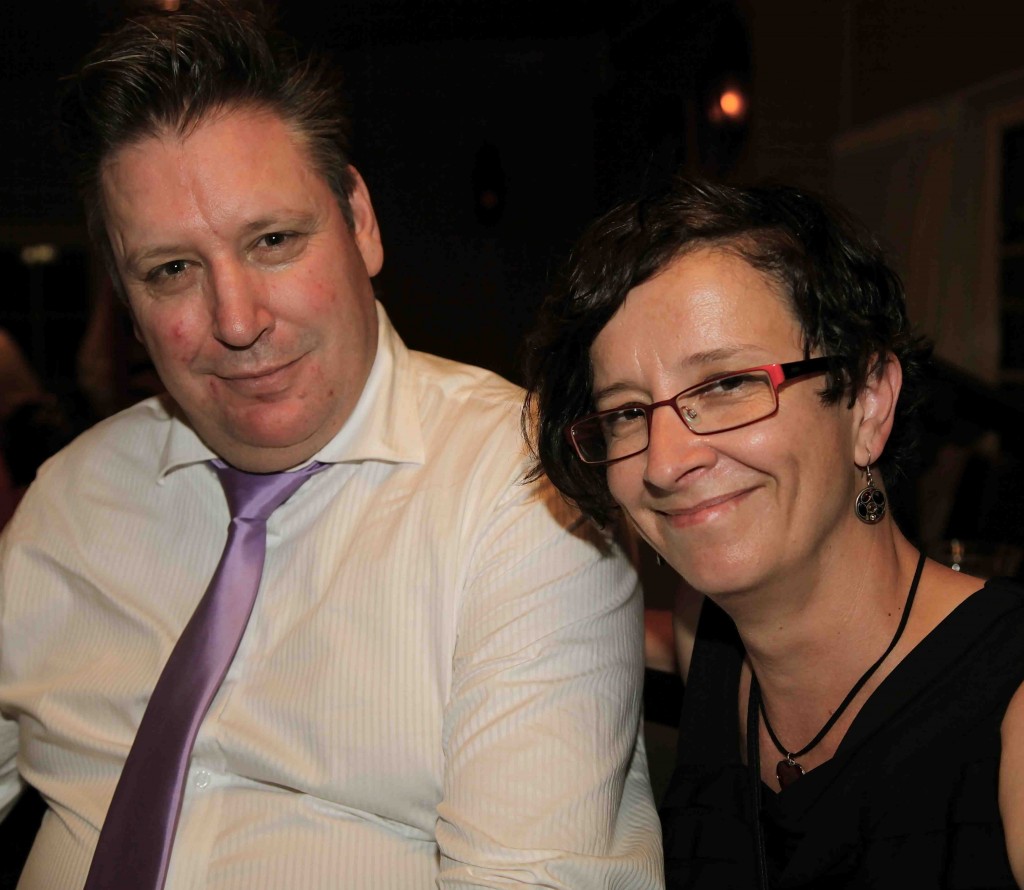
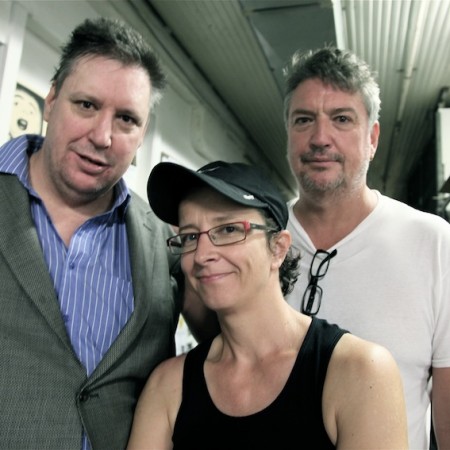
Director Bio: Kaye Harrison
Kaye Harrison in an independent documentary filmmaker who explores difficult topics in an engaging and illuminating way. Working mostly as an observational DOP/director, Kaye develops strong relationships of trust with her participants and this translates into a powerful intimacy in her films. Her vision is to represent her subject’s with integrity and compassion so that their stories might open the hearts and minds of the audience. Director/DOP of the 1hr documentaries Crossing the Line (2005) and The Long Goodbye (2010), Kaye makes her feature debut with The Sunnyboy.
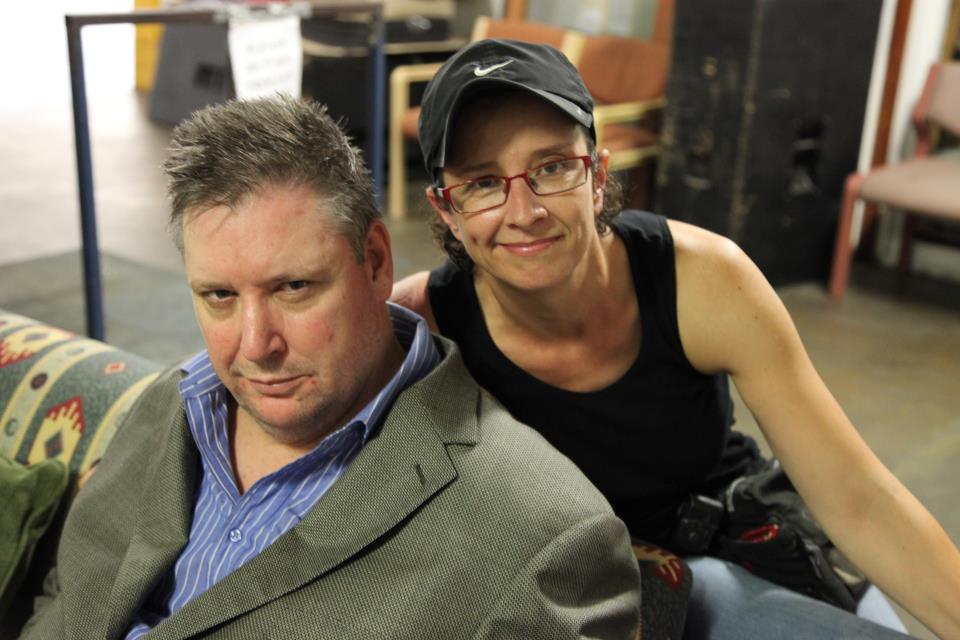

Producer Bio: Tom Zubrycki
Tom Zubrycki is an award-winning documentary filmmaker renowned for his distinctive observational story-telling style and his ability to get close to his subjects. During the course of a long career, Tom has evolved a strongly authored style focusing round a personal response to the big issues of the day.
His latest film The Hungry Tide (2011) is a personal story about the Pacific nation of Kiribati—one of the countries in the world on the front-line of climate change. It premiered at the Sydney Film Festival, screened in competition at IDFA, and was awarded the Special Jury Prize at FIFO.
His earlier films include Temple of Dreams (2007) about the struggle of a group of young Muslim Australians to keep open a youth centre in Sydney’s west, and Molly & Mobarak (2003), a story about a relationship between a young Afghani refugee and a school-teacher in an Australian country town. Both these two films take up the themes of displacement, identity and cultural difference—ideas that Tom been exploring since the 90′s in films such as Homelands (1993) and Billal (1996).
In 2000 he completed The Diplomat a documentary about Jose Ramos-Horta, the exiled East Timorese freedom-fighter who became the country’s President. The film won two Australian Film Institute Awards for Best Director and Best Documentary.
Tom also works as a producer—often mentoring emerging filmmakers. His credits include Exile in Sarajevo (1996, International Emmy for Best Documentary), Whiteys Like Us (1998), Dr Jazz (1999), Stolen Generations (2000), Making Venus (2001), Gulpilil – One Red Blood (2002), Mad Morro (2008), Wanja (2008), The Intervention (2008), Stolen (2009), Big Boss (2012) and Light from the Shadows (2012).
Apart from directing Tom teaches master-classes at the Australian Film, TV & Radio School, and in the past he has taught documentary at UTS and Metro Screen.
In 2010 Tom received the Stanley Hawes Award ‘in recognition of outstanding contribution to documentary filmmaking in Australia’.
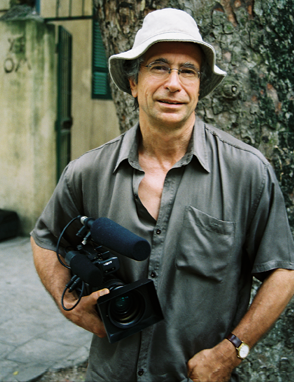

Editor bio: Karen Johnson
Karen Johnson is a highly experienced drama and documentary editor, she has worked on over 50 productions and been nominated for two IF awards in recognition for her work on “Beneath Clouds” and “One Night The Moon”. Recently, her body of work has included feature film “Griff the Invisible” and feature documentaries “The Last Impresario” and “The Sunnyboy”..
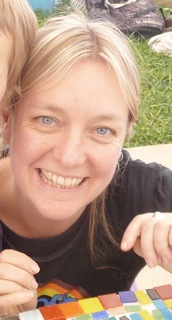
-
Official Selection: Sydney Film Festival 2013
-
Finalist: 2013 Foxtel Australian Documentary Prize
-
Official Selection: Vivid Sydney 2013
-
2013 Melbourne International Film Festival
-
2013 Walkley Documentary Award Longlist
-
Nominee: 2014 ADG Best Direction of Documentary Feature
-
Official Selection: Council on Social Work Education Festival USA 2014
-
Winner: TheMHS Broadcast Media Award 2014


